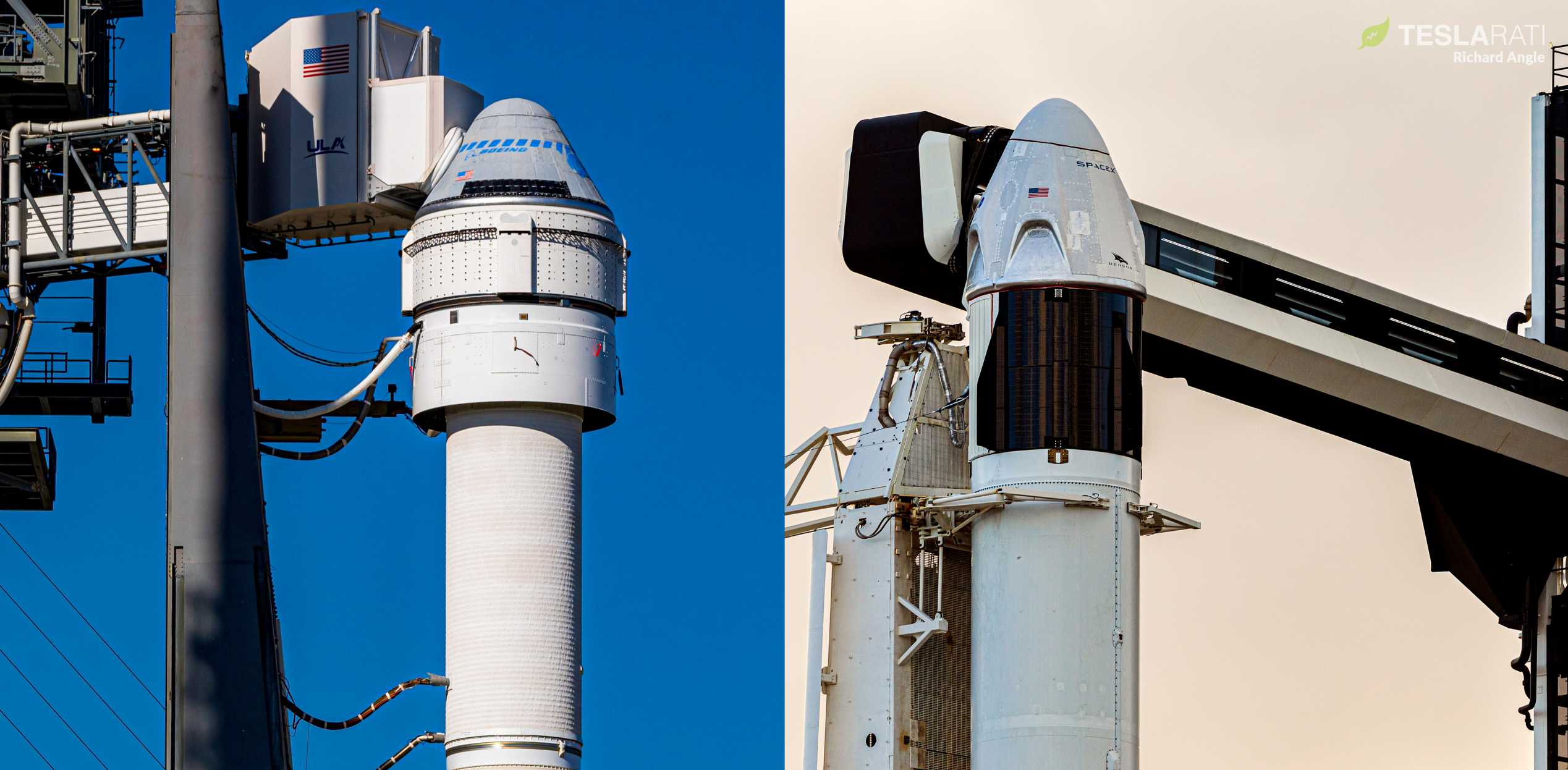

News
SpaceX set to launch NASA astronauts first after Boeing narrowly avoids catastrophe in space
SpaceX is set to become the first private company to launch NASA astronauts as few as three months from now, all but guaranteed after Boeing’s competing Starliner spacecraft narrowly avoided a catastrophe in space on its orbital launch debut.
The ultimate purpose of NASA’s Commercial Crew Program (CCP) is to ensure that the US is once again able to launch its own astronauts into orbit and to the International Space Station (ISS) – a capability the country has not possessed since it prematurely canceled the Space Shuttle in 2011. In a logical step, NASA decided to fund two independent companies to ensure that astronaut launch capabilities would be insulated against any single failure, ultimately awarding contracts to Boeing and SpaceX in 2014. Boeing did actually try to have Congress snub SpaceX back in 2014 and solely award the contract to Starliner, but the company thankfully failed.
As a result, SpaceX beating Boeing on the (not-a-) race to launch NASA astronauts to the International Space Station (ISS) would represent an immense and deeply embarrassing upset in the traditional aerospace industry – essentially a case of David and Goliath. For the better part of a decade, Congress, most industry officials, and Boeing itself have argued ad nauseum the Starliner spacecraft was clearly a far safer bet than anything built by SpaceX – Boeing, obviously, has far more experience (“heritage”) in the spaceflight industry. However, multiple “catastrophic” failures during Boeing’s recent Starliner ‘Orbital Flight Test’ (OFT) paint a far uglier picture.
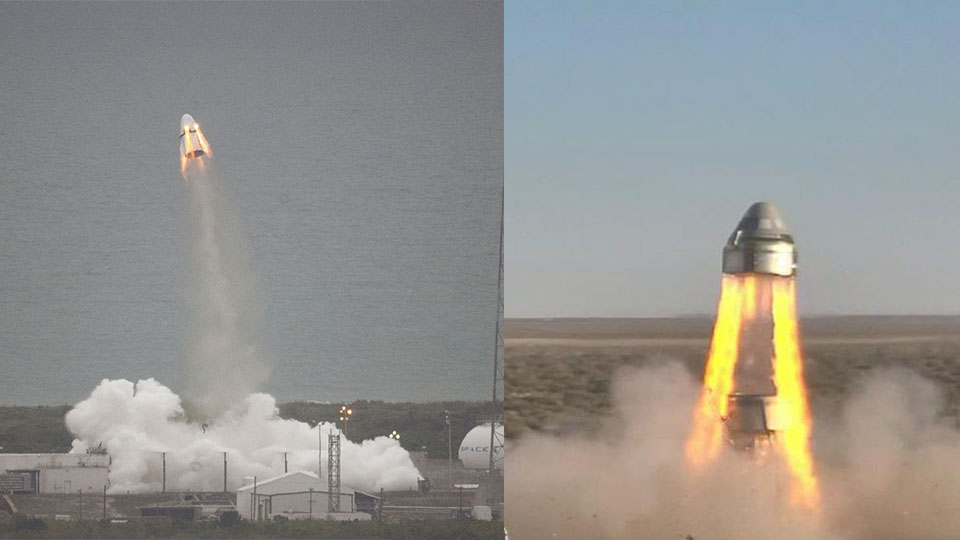
As its PR team and executives will constantly remind anyone within earshot, Boeing helped build the first stage of the Saturn V rocket, while a company it bought years after the fact (Rockwell) did technically buy the company (North American) that built the spacecraft (Apollo CSM) that carried NASA astronauts from the Earth to the Moon (and back). Rockwell (acquired by Boeing) also built all five of NASA’s Space Shuttle orbiters.
In the 1990s, Boeing – set to lose a competition to build an expendable rocket for the US military – acquired McDonnell Douglas at the last second, slapping a Boeing sticker on the Delta IV rocket – designed and built by MD. Boeing then conspired to steal trade secrets from Lockheed Martin (bidding Atlas V) and used that stolen info to mislead the USAF about the real cost of Delta IV, thus securing the more lucrative of two possible contracts. This is all to point out the simple fact that Boeing has far less real experience designing spacecraft than it tends to act like it does.
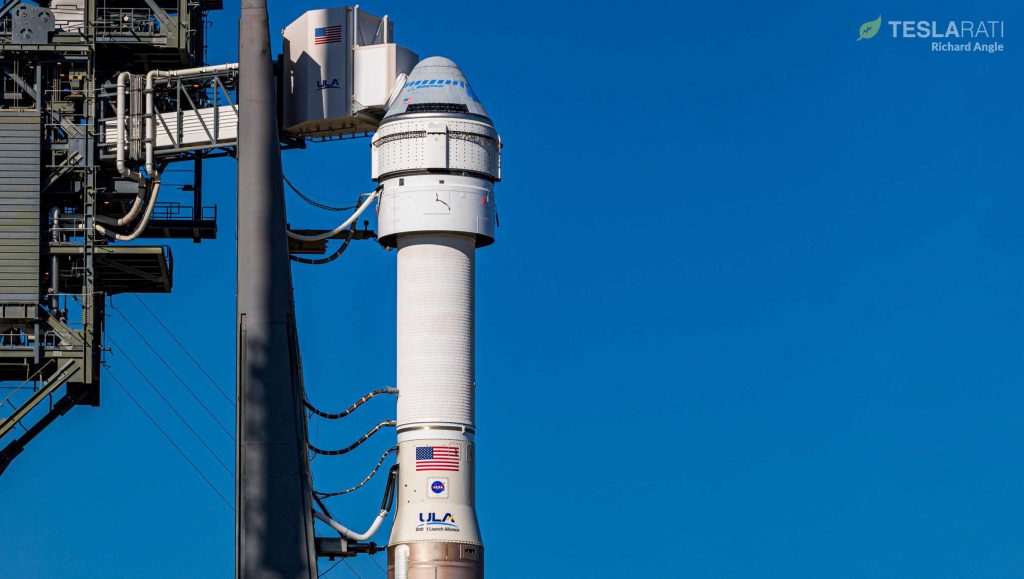
As such, it’s substantially less surprising than it might otherwise be that Boeing’s Starliner spacecraft has had such a rocky orbital launch debut. Preceded just a matter of weeks by a quality assurance failure that prevented one of Starliner’s four parachutes from deploying after an otherwise-successful pad abort test, a second Starliner spacecraft launched atop an Atlas V rocket on its orbital launch debut (OFT) on December 20th, 2019. Atlas V performed flawlessly but immediately after Starliner separated from the rocket, things went very wrong.
Bad software ultimately caused the spacecraft to perform thousands of uncommanded maneuvering thruster burns, depleting a majority of its propellant before Boeing was able to intervene. Starliner managed to place itself in low Earth orbit (LEO), but by then it had nowhere near enough propellant left to rendezvous and dock with the ISS – one of the most crucial purposes of the uncrewed flight test. Unable to complete that part of the mission, Boeing instead did a few small tests over the course of 48 hours in orbit before commanding the spacecraft’s reentry and landing on December 22nd.
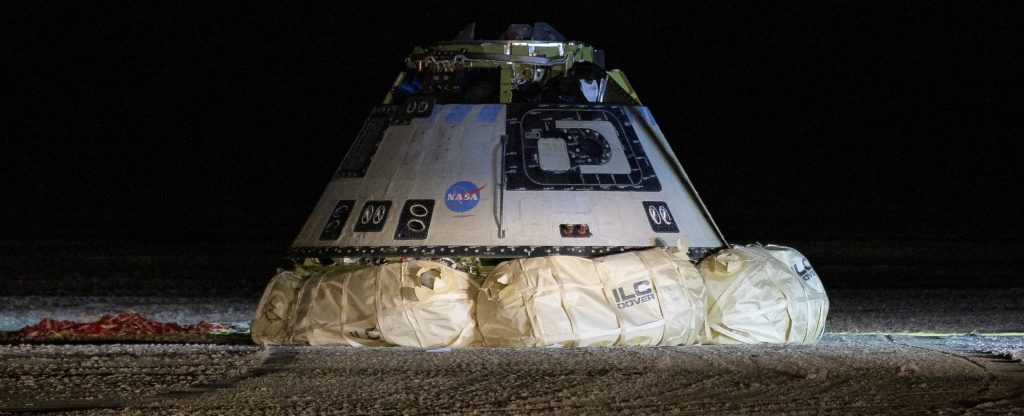
But wait, there’s more!
As it turns out, although both NASA and Boeing inexplicably withheld the information from the public for more than two months, Boeing’s OFT Starliner spacecraft reportedly almost suffered a second major software failure just hours before reentry. According to NASA and Boeing comments in a press conference held only after news of that second failure broke after an advisory panel broached the issue in February 2020, a second Starliner software bug – caught only because the first failure forced Boeing to double-check its code – could have had far more catastrophic consequences.
NASA officials stated that had the second bug not been caught, some of Starliner’s thruster valves would have been frozen, either entirely preventing or severely hampering the spacecraft’s detached trunk from properly maneuvering in orbit. Apparently, that service module (carrying fuel, abort engines, a solar array, and more) could have crashed into the crew module shortly after detaching from it. Unsurprisingly, that ‘recontact’ could have severely damaged the Starliner crew capsule, potentially making reentry impossible (or even fatal) if its relatively fragile heat shield bore the brunt of that impact.
SpaceX has undeniably suffered its own significant failures, most notably when flight-proven Crew Dragon capsule C201 exploded moments before a static fire test, but the company has already proven that it fixed the source of the failure with the spacecraft’s second successful launch on a Falcon 9 rocket. Ultimately, it’s becoming nearly impossible to rationally argue that Boeing’s Starliner will be safer than SpaceX’s Crew Dragon – let alone worth the 40% premium Boeing is charging NASA and the US taxpayer.
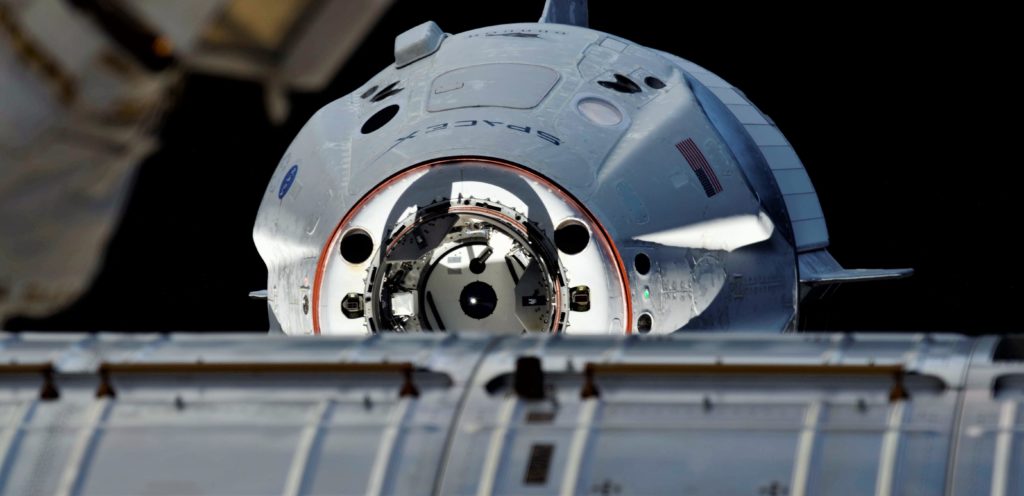
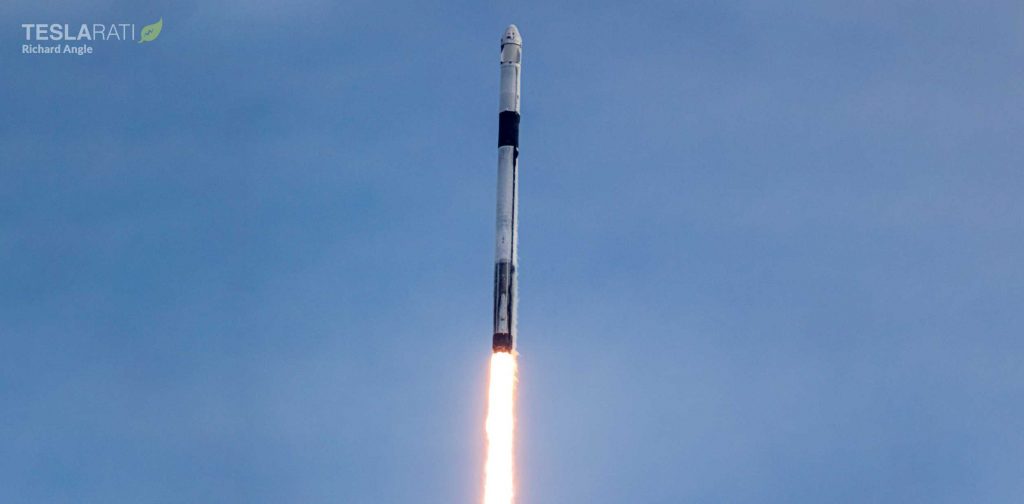
According to Ars Technica’s Eric Berger, Crew Dragon’s inaugural astronaut launch is now tentatively scheduled as early as late-April to late-May 2020. Paperwork – not technical hurdles – is currently the source of that uncertainty, and all Demo-2 mission hardware (Falcon 9 and Crew Dragon) is either already in Florida or days away from arriving.
Due to the combination of similar software failures Starliner suffered during its first and only launch, Boeing now has to review the entirety of the spacecraft’s software – more than a million lines of code – before NASA will allow the company to launch again. There’s also a very good chance that Boeing will now have to repeat the Orbital Flight Test, potentially incurring major delays. In short, it would take nothing less than a miracle – or NASA making a public mockery of itself for Boeing’s benefit – for Starliner to launch astronauts before SpaceX.
Check out Teslarati’s Marketplace! We offer Tesla accessories, including for the Tesla Cybertruck and Tesla Model 3.
News
Tesla UK sales see 14% year-over-year rebound in June: SMMT data
The SMMT stated that Tesla sales grew 14% year-over-year to 7,719 units in June 2025.

Tesla’s sales in the United Kingdom rose in June, climbing 14% year-over-year to 7,719 units, as per data from the Society of Motor Manufacturers and Traders (SMMT). The spike in the company’s sales coincided with the first deliveries of the updated Model Y last month.
Model Y deliveries support Tesla’s UK recovery
Tesla’s June performance marked one of its strongest months in the UK so far this year, with new Model Y deliveries contributing significantly to the company’s momentum.
While the SMMT listed Tesla with 7,719 deliveries in June, independent data from New AutoMotive suggested that the electric vehicle maker registered 7,891 units during the month instead. However, year-to-date figures for Tesla remain 2% down compared to 2024, as per a report from Reuters.
While Tesla made a strong showing in June, rivals are also growing. Chinese automaker BYD saw UK sales rise nearly fourfold to 2,498 units, while Ford posted the highest EV growth among major automakers, with a more than fourfold increase in the first half of 2025.
Overall, the UK’s battery electric vehicle (BEV) demand surged 39% to to 47,354 units last month, helping push total new car sales in the UK to 191,316 units, up 6.7% from the same period in 2024.
EV adoption accelerates, but concerns linger
June marked the best month for UK car sales since 2019, though the SMMT cautioned that growth in the electric vehicle sector remains heavily dependent on discounting and support programs. Still, one in four new vehicle buyers in June chose a battery electric vehicle.
SMMT Chief Executive Mike Hawes noted that despite strong BEV demand, sales levels are still below regulatory targets. “Further growth in sales, and the sector will rely on increased and improved charging facilities to boost mainstream electric vehicle adoption,” Hawes stated.
Also taking effect this week was a new US-UK trade deal, which lowers tariffs on UK car exports to the United States from 27.5% to 10%. The agreement could benefit UK-based EV producers aiming to expand across the country.
News
Tesla Model 3 ranks as the safest new car in Europe for 2025, per Euro NCAP tests
Despite being on the market longer than many of its rivals, the Tesla Model 3 continues to set the bar for vehicle safety.

The Tesla Model 3 has been named the safest new car on sale in 2025, according to the latest results from the Euro NCAP. Among 20 newly tested vehicles, the Model 3 emerged at the top of the list, scoring an impressive 359 out of 400 possible points across all major safety categories.
Tesla Model 3’s safety systems
Despite being on the market longer than many of its rivals, the Tesla Model 3 continues to set the bar for vehicle safety. Under Euro NCAP’s stricter 2025 testing protocols, the electric sedan earned 90% for adult occupant protection, 93% for child occupant protection, 89% for pedestrian protection, and 87% for its Safety Assist systems.
The updated Model 3 received particular praise for its advanced driver assistance features, including Tesla’s autonomous emergency braking (AEB) system, which performed well across various test scenarios. Its Intelligent Speed Assistance and child presence detection system were cited as noteworthy features as well, as per a WhatCar report.
Other notable safety features include the Model 3’s pedestrian-friendly pop-up hood and robust crash protection for both front and side collisions. Euro NCAP also highlighted the Model 3’s ability to detect vulnerable road users during complex maneuvers, such as turning across oncoming traffic.
Euro NCAP’s Autopilot caution
While the Model 3’s safety scores were impressive across the board, Euro NCAP did raise concerns about driver expectations of Tesla’s Autopilot system. The organization warned that some owners may overestimate the system’s capabilities, potentially leading to misuse or inattention behind the wheel. Even so, the Model 3 remained the highest-scoring vehicle tested under Euro NCAP’s updated criteria this year.
The Euro NCAP’s concerns are also quite interesting because Tesla’s Full Self-Driving (FSD) Supervised, which is arguably the company’s most robust safety suite, is not allowed for public rollout in Europe yet. FSD Supervised would allow the Model 3 to navigate inner city streets with only minimal human supervision.
Other top scorers included the Volkswagen ID.7, Polestar 3, and Geely EX5, but none matched the Model 3’s total score or consistency across categories. A total of 14 out of 20 newly tested cars earned five stars, while several models, including the Kia EV3, MG ZS, and Renault 5, fell short of the top rating.
Elon Musk
Why Tesla’s Q3 could be one of its biggest quarters in history
Tesla could stand to benefit from the removal of the $7,500 EV tax credit at the end of Q3.

Tesla has gotten off to a slow start in 2025, as the first half of the year has not been one to remember from a delivery perspective.
However, Q3 could end up being one of the best the company has had in history, with the United States potentially being a major contributor to what might reverse a slow start to the year.
Earlier today, the United States’ House of Representatives officially passed President Trump’s “Big Beautiful Bill,” after it made its way through the Senate earlier this week. The bill will head to President Trump, as he looks to sign it before his July 4 deadline.
The Bill will effectively bring closure to the $7,500 EV tax credit, which will end on September 30, 2025. This means, over the next three months in the United States, those who are looking to buy an EV will have their last chance to take advantage of the credit. EVs will then be, for most people, $7,500 more expensive, in essence.
The tax credit is available to any single filer who makes under $150,000 per year, $225,000 a year to a head of household, and $300,000 to couples filing jointly.
Ending the tax credit was expected with the Trump administration, as his policies have leaned significantly toward reliance on fossil fuels, ending what he calls an “EV mandate.” He has used this phrase several times in disagreements with Tesla CEO Elon Musk.
Nevertheless, those who have been on the fence about buying a Tesla, or any EV, for that matter, will have some decisions to make in the next three months. While all companies will stand to benefit from this time crunch, Tesla could be the true winner because of its sheer volume.
If things are done correctly, meaning if Tesla can also offer incentives like 0% APR, special pricing on leasing or financing, or other advantages (like free Red, White, and Blue for a short period of time in celebration of Independence Day), it could see some real volume in sales this quarter.
You can now buy a Tesla in Red, White, and Blue for free until July 14 https://t.co/iAwhaRFOH0
— TESLARATI (@Teslarati) July 3, 2025
Tesla is just a shade under 721,000 deliveries for the year, so it’s on pace for roughly 1.4 million for 2025. This would be a decrease from the 1.8 million cars it delivered in each of the last two years. Traditionally, the second half of the year has produced Tesla’s strongest quarters. Its top three quarters in terms of deliveries are Q4 2024 with 495,570 vehicles, Q4 2023 with 484,507 vehicles, and Q3 2024 with 462,890 vehicles.
-

 Elon Musk4 days ago
Elon Musk4 days agoTesla investors will be shocked by Jim Cramer’s latest assessment
-

 News1 week ago
News1 week agoTesla Robotaxi’s biggest challenge seems to be this one thing
-

 Elon Musk2 weeks ago
Elon Musk2 weeks agoFirst Look at Tesla’s Robotaxi App: features, design, and more
-

 News2 weeks ago
News2 weeks agoSpaceX and Elon Musk share insights on Starship Ship 36’s RUD
-

 News2 weeks ago
News2 weeks agoWatch Tesla’s first driverless public Robotaxi rides in Texas
-

 News1 week ago
News1 week agoWatch the first true Tesla Robotaxi intervention by safety monitor
-

 News2 weeks ago
News2 weeks agoTesla has started rolling out initial round of Robotaxi invites
-

 Elon Musk2 weeks ago
Elon Musk2 weeks agoTesla to launch in India in July with vehicles already arriving: report


















